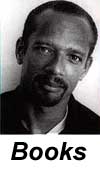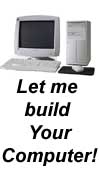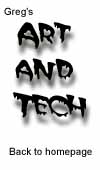




Computer tips
Here you will find all kinds of tips for
your optimal computer enjoyment. Totally for FREE!!
TIP #1
AUTO
ARRANGE OPTION
I
can't tell you how many people ask how to keep their desktop icons
from jumping back into neat little rows every time they try to move
them into a unique formation. Annoying, isn't it? By default,
Microsoft made the Auto Arrange option the default. If you want
free-flowing icons, you'll need to turn this option off.
Right-click the desktop and select Arrange Icons. In the resulting
menu, you'll see a check mark next to Auto Arrange. Select this option
(to deselect it). Back on the desktop, try to relocate an icon.
Much
better.
TIP #2
Here are a few more
tricks for navigating dialog boxes
without the mouse. To highlight different areas of a dialog box, press
the Tab key (or Shift-Tab to move backward). To display drop-down
menus, use the Alt-Up Arrow and Alt-Down Arrow. To mark empty check
boxes, just press the spacebar. And press Enter at any time to select
the highlighted areas.
TIP #3
If you're moving files or folders around on
your desktop, you can
always stop a drag-and-drop operation by pressing the Esc key before
you drop the file or folder. This is useful if you're moving a folder
and you suddenly realize you didn't mean to. Pressing Esc leaves the
file exactly where it started, without you having to put it back in
exactly the right place.
TIP #4
To put a shutdown icon on
your desktop, right-click on
your desktop and choose New, Shortcut. In the command line, enter
rundll.exe user.exe,exitwindows
and then click Next. Choose a name for the shortcut in the next box
(probably something like Shut Down) and then click finish. You can now
double-click this icon to shut down your computer, without going to
the Start menu.
TIP #5
Here is
how to add a Restart icon to your computer.
First, right-click the desktop, click New, and then click Shortcut.
Click the Browse button, and navigate to
C:\Windows\Rundll.exe
and then click Open. Add one space to this command line, and then type
user.exe,ExitWindowsExec
Click Next, and then give your Shortcut a name (Restart should work.)
Then click Finish.
Whenever you double-click your Restart icon, Windows will restart
without you having to go to the Start menu.
TIP #6
You can put the Find command
on your Quicklaunch Toolbar
so it'll be available with a single mouse click. First, open Find by
going to Start, Find, Files Or Folders. Here you'll want to set up the
Find parameters so they'll be most useful to you, selecting the drive
or folder you think you're likely to be looking in. Then select File,
Save Search and an icon with the search criteria appears on your
desktop. Simply drag this icon to your Quicklaunch Toolbar and your
Find command is always easily accessible.
TIP #7
How to clear the Windows
Password box to avoid
having to log in to Windows whenever you start your computer. If this
tip didn't work for you, your computer might be setup for multiple
users. If you're the only person using your computer and you don't
need different sets of saved preferences, you'll want to change this
setting. Go to Start, Settings, Control Panel and open the Passwords
icon. Then click the User Profiles tab and click the All Users Of This
Computer Use The Same Preferences And Desktop Settings button. Click
OK to exit and save changes.
TIP #8
PRESS F3 TO ACCESS FIND WINDOW
Looking for a quick way to access a Find window? From the desktop or
any Explorer window, press F3. It's the same as selecting Start, Find,
Files or Folders.
(Note: When you press F3, Find will open with its focus on your
current location. For example, if you're on the desktop, the Look In
line will point to the Desktop folder.
TIP #9
RIGHT-CLICK TO
FIND
In the
last tip, I
told you that you can press F3 from the desktop or
any Explorer window to open Find (focused on that folder). If you're
more of a mouse person, another way to open Find is to right-click the
folder or drive you want to search and select Find. Again, Find will
open with the focus on that folder.
TIP #10
FLOPPY SHORTCUTS FOR
EVERYONE
When you pop a floppy in your floppy drive, how do you access its
contents--by using (A) a My Computer window, or (B) an Explorer
window? How about C, none of the above. The easiest way to view the
contents of a floppy is by double-clicking the floppy drive shortcut
you should place on your desktop--that is, if you like to do things
the short way.
Open a My Computer or Explorer window, click and drag your floppy
drive icon out to the desktop, and release the mouse button. Click Yes
to confirm that you want to create a shortcut, and you're done. The
next time you want to view the contents of a floppy, just double-click
your new shortcut, and you're in.
TIP #11
CREATE WORDPAD
TEMPLATE
If you frequently use WordPad to do your word processing, you're
probably getting tired of formatting every document (changing the
font, typing the same heading, and so on). Does this thing come with
templates or what? The answer is no, but that doesn't mean you can't
make one. Just take a few minutes to do the formatting once, and
you'll have an instant time-saver.
Open WordPad and make all the formatting changes you'd like to include
in your template--for example, you might change the font and point
size of the text. (Tip: Type at least one character and then assign
these settings to it.) When you're finished, save the file in a
convenient location using a name such as "template.tpl."
Now instruct Windows to open any file with a .tpl extension in
WordPad. Open any Explorer window and select View, Folder Options. On
the File Types tab, click the New Type button. Next to Description Of
Type, enter a description, such as "WordPad Template." Next to
Associated Extension, type
tpl
Click New, and in the Action box of the New Action dialog box, type
Open
Under Application Used To Perform Action, type WordPad's path, such as
C:\Program Files\Accessories\Wordpad.exe
Finally, click OK three times to close all open dialog boxes.
Ready to try it out? Double-click template.tpl and it opens in
WordPad, complete with all your formatting. (Tip: Be sure to save it
under a new name before creating a new document from the template.)
TIP #12
Want
to fully expand a folder in the left pane of a two-paned Explorer
window? Select the folder and press the asterisk key (*) on your
numeric keypad. The result is a fully expanded view of all folders and
subfolders inside.
TIP #13
In
the
last tip,
I
showed you how to fully expand a folder in the
left pane of a two-paned Explorer window: Select the folder and press
the asterisk key (*) on your numeric keypad. Want to collapse it
again? If you simply press the minus sign (-) at the top of the
expanded branch, the folders inside will appear to collapse; but the
next time you expand that folder, its contents appear fully expanded.
So what's the trick? After clicking the minus sign (-) at the top of
the branch, press F5.
TIP #14
Have you ever noticed
the word "Links" on the far-right side of an
Explorer window's Address bar? Double-click it (or the word
"Address"), and you've got another whole toolbar! The Links bar
provides you with--what else?--links to Web sites.
Of course, you'll want to customize the links to suit your own needs.
To delete a link, right-click it and select Delete. To add a link,
point the current window at that Web page (type its URL on the Address
bar and press Enter), then drag that Web page's icon from the Address
bar directly over the Links bar and release the mouse button.
Want your Address bar back? Double-click Address or Links.
(Note: If you're missing the Address bar or the Links bar from your
folder window, select one or the other, or both, from the View,
Toolbars window.)
TIP #15
In
the
last tip,
I
introduced the Links toolbar--a bar of Web-site
links that hides out to the right of any Explorer window's Address
bar. To display this toolbar, just double-click the word "Links" on
the right side of the Address bar. (To view your Address bar again,
just double-click Address.) Tired of having to choose between the
Address bar and the Links bar? This default arrangement of sharing a
bar isn't written in stone. If you prefer, you can give each bar its
very own row.
Hold your mouse pointer over the vertical bar at the left end of the
Links toolbar. When it changes to a double-pointed arrow, click and
drag the bar downward, then release the mouse button. Instantly, the
bar expands to fill the row just below the Address bar.
(Tip: If you'd rather have the Address bar on the bottom, after
following the steps above, use the vertical bar on the Address bar to
drag it down below the Links bar, then release the mouse button.
TIP #16
How to change extensions.
This
is something that you should not need to do very often, because you
could potentially render a file unreadable if you change the extension
to something no application can understand. But if you're sure you
need to assign a file a new extension, it's not hard to do so. You
just need to make sure you set up your desktop to show extensions.
Open a folder and go to View, Folder Options. Click the View tab and
uncheck the box that says Hide File Extensions For Known File Types.
When you rename a file from that point forward, you can type a period
and three letter characters to give it a new extension.
TIP #17
If you have a shortcut on
your desktop that you'd like to add to your
Programs menu in a hurry, you can drag and drop it to the Programs
menu directly. Just grab it, hold it over the Start button until it
opens, then go to programs, and drop the shortcut into in the Programs
menu. This will create a copy in the Programs menu, so your original
icon is still on the desktop.
To submit your tips just click on the link below.
Please visit my friend`s site, it has a lot of links and its a very informative site .
Nothing to do with computers but at least you will know what you have missed during Halloween and a great part of you life!